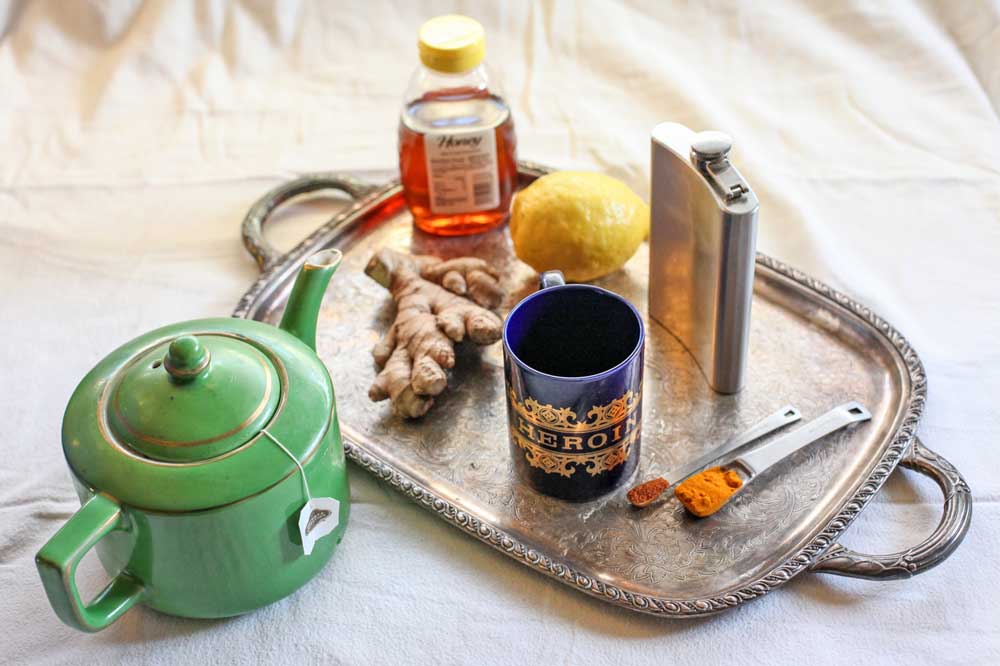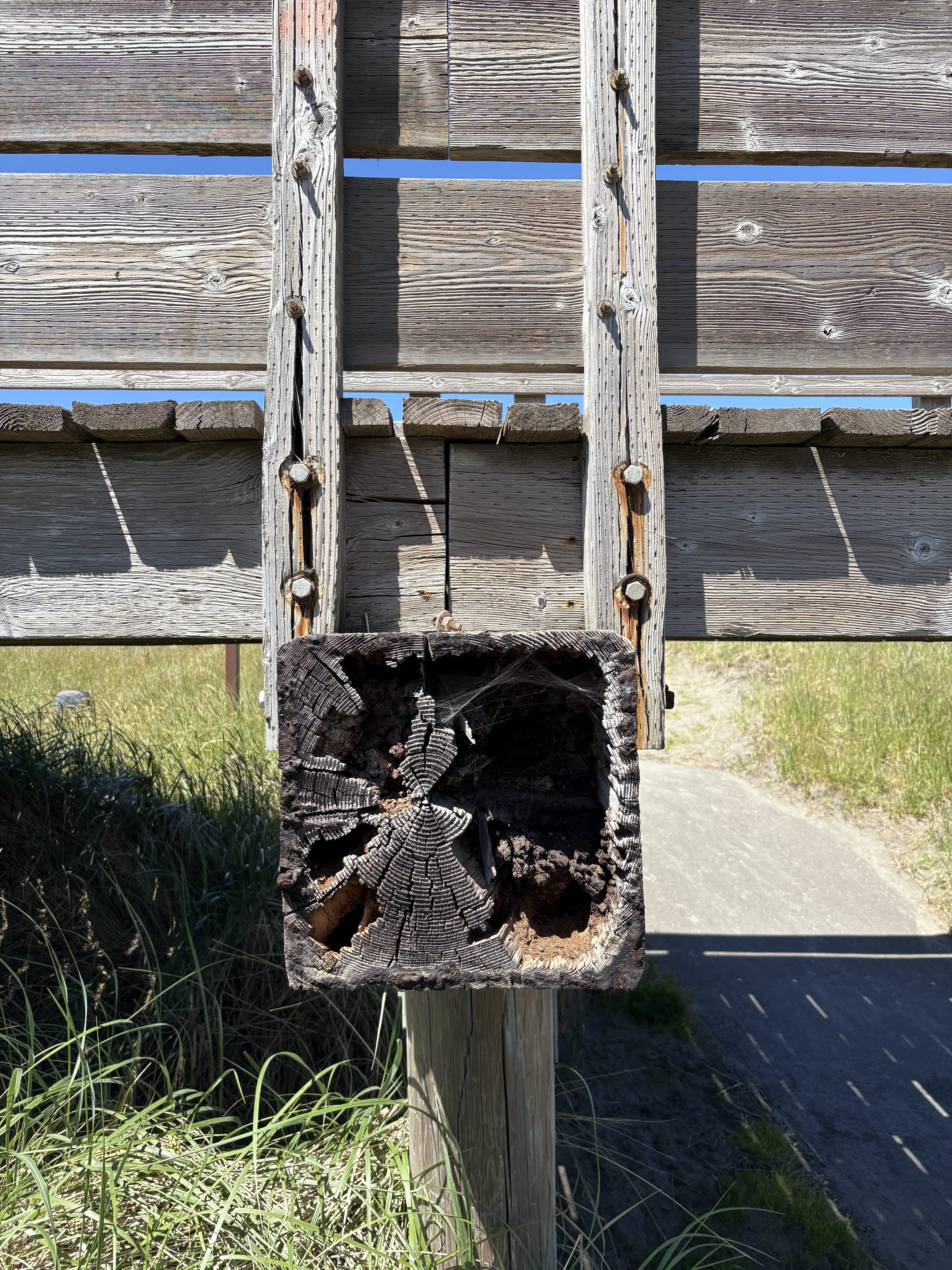Hearthfire & Brimstone: Bloodroot, sweat and tears; Or, how good old-fashioned home remedies drove me to drink
Published 8:22 am Monday, March 11, 2019

- With cold and flu season still gripping the nation, it’s a good time to review home remedies, old and new. Some things like herbal tea are still recommended, while heroin is not.
American scientists declared victory over the measles virus 19 years ago. It was gone for good, they said. But as any child of the 1980s knows, villains never really die — they just keep on terrorizing camp counselors and frisky teenagers in increasingly improbable sequels.
Trending
Set in Vancouver, Wash., Outbreak 2019: Full-Blown Measles is a straight-to-video B movie about a group of superstitious parents who accidentally resurrect a long-dead virus, then fight it using essential oils, vitamin A and Facebook memes about big pHARMa. As the undead disease hopscotches its way from one unvaccinated household to the next threatening to give babies encephalitis, terrified pregnant women sequester themselves inside their subdivisions. Nearly all of the casualties are children.
Kitchen witchery
While waiting to see if “Full Blown” will be coming to a theater near us, we’ve been dealing with a more mundane virus: the common cold. The other day I heard a rumor that so many kids were sick in Ilwaco that administrators considered closing school for a day so they could douse the whole place in disinfectant.
While a cold lacks the spine-tingling thrills and visual drama of a measles outbreak, it’s pretty unlikely to kill anyone. Antibiotics are useless against viruses, and, as demonstrated by the measles comeback, undoing decades of medical progress is hugely trendy right now. So really, it seemed like the perfect time to try out some old-fashioned cold remedies.
I personally think western medicine is a useful innovation, but I get the appeal of DIY healthcare. Making herbal remedies is a lot like cooking, but without the pressure to make anything taste good. It feels witchy and mystical and talismanic. It makes you feel like you’re one of the ones who will not just survive the apocalypse, but come out the other side with a thriving farm and a nice sideline in homespun dresses.
Sweat it out
My boss lent me his 1873 “Receipt Book,” written by Dr. A.W. Chase, Ferrier and Bee Keeper, so I could see how people treated colds back when germ-theory was still considered a wacky fad, like wearing overalls backwards.
I had to laugh as I read Chase’s 146-year-old advice, because he relied heavily on several things crunchy types have “discovered” in recent years, such as “beef tea” — now exalted as a miracle healing substance called “bone broth,” and “essences” — essential oils. What’s old is new, what’s new is old. We are living in very strange times indeed.
Dr. Chase felt strongly that sweat was both the cause and the cure for just about every ill. All too often, he said, men would stop in the midst of cutting wood to chat with their neighbors about “neighborhood scandals, politics and the price of pork.” It never ended well. After 30 minutes of recklessly exposing their sweaty hides to the air, they’d fall sick. Failure to “re-establish perspiration,” the good doctor said, could only make matters worse.
Being idle after any sweat-inducing occupation was perilous because instead of “throwing off” toxic substances through sweat, the body would draw them in. If all the waylaid sweat soaked into the head or chest, the inevitable result was a cold.
In an era when underthings were made of wool, the sweat-made-me-sick theory was surely ripe for exploitation by men trying to explain their social diseases to their wives.
The hippocratic what?
The key to treatment, was, you guessed it, “exciting a free perspiration,” by means of “sweating powders,” herbal foot baths and a uniquely Victorian torture method known as the “Rum Sweat.” This involved pouring rum into a saucer and placing it under a chair, where the naked patient sat. The caregiver would ignite the alcohol, then use blankets to make a little tent around the patient. If, after 30 minutes, the cold-sufferer was not engulfed in flames, they were to crawl into a bed made up with hot blankets. Alternately, the afflicted could be “packed” into a tightly wrapped cocoon of hot, wet sheets for up to two hours.
It was at this point that I began to hope Dr. Chase was better at shoeing horses and keeping bees than he was at medicine, although I was not optimistic, as the bee-keeping chapter included a section dedicated to dispelling the apparently widespread myth that African-Americans can’t keep bees because the bees will attack them. He even included a first-hand account from an elderly Black lady-beekeeper who assured readers that she only got stung the regular amount.
Fighting ‘poisons’ with poison
I read on because I wanted to know what he had to say about alleviating specific cold symptoms. Dr. Chase believed coughs would inevitably turn into tuberculosis if not treated aggressively.
In between sweats, patients were to take a mixture of butter, honey, good vinegar and pepper several times a day. He also recommended three to six daily doses of his special recipe cough syrup; a combination of anise and almond oils, turpentine and laudanaum, a preparation of opium suspended in alcohol. As if an elixir that could clean paintbrushes and get you stoned out of your gourd wasn’t enough, it also included ipecac, which can rapidly induce forceful vomiting in large doses, digitalis, a plant that is fatally toxic when misused, lobelia, a family of flowers with a potent, nicotine-like toxin that was once believed to kill syphilis and bloodroot, another toxic flower known for its ability to “empty the bowels” and burn off skin tumors, with hideously disfiguring results.
I was beginning to realize Dr. Chase definitely ascribed to the “what doesn’t kill you makes you stronger” school of home medicine. Nevertheless, I persisted — until I got to the sore throat remedy that involved sulphuric acid.
I decided to look up Dr. Chase. As it turned out, he was never a doctor in the technical “having a medical degree” sense. Originally from Ohio, he started out as a traveling salesman, and audited medical classes because he didn’t know enough Latin to get accepted into the medical school. Using a combination of pseudo-science and relentless self promotion, he went on to publish several popular books of domestic advice and start a Canadian company that successfully peddled “patent medicines” — the snake oil cures that rarely contained anything of therapeutic value. In other words, he was the Dr. Oz of his day. He died at 68.
Call Dr. Facebook
Clearly, the DIY medicine of yore was primarily effective as a form of population control, so I decided to turn to that great repository of medical information for the masses, Facebook. I joined a few groups for “Off the Grid” and “Crunchy” moms.
The Off-the-Grid ladies turned out to be mostly survivalist moms who worked on their farms 16 hours a day, stopping only to ask starkly practical questions like which gun is best for shooting aggressive coyotes. They were lovably nutty.
However, it quickly became evident that the crunchy moms shared a steadfast commitment to seeking medical advice from literally anyone but medical professionals. With each grisly new “Is this cancer?” and “My infant son’s ears are spouting geysers of neon-green pus and it seems like he can’t hear anymore. What oils should I be giving him?” post, I felt a bit more uneasy.
I told my friend I was going to ask the group for advice about whether vaccinating my cows would give them autism, but someone beat me to it, asking if they should “vax” their pets. The crunchies almost unanimously agreed that it was a very dangerous practice indeed. One woman said her friend’s cat was “vaccine injuried.” I was feeling sorely tempted to argue, so I got out of there before someone could throw a bottle of colloidal silver at me.
Google turned up myriad recipes for herbal tinctures, oxymels (a very old type of medicine made of herb-infused honey and vinegar), syrups and balms that reportedly work well on colds. Those probably deserve more attention, but given that they require special ingredients as well as knowledge and skill, there was precious little chance of me or anyone else making them while sick.
Drink your troubles away
Having unsuccessfully searched both history and cyberspace for the elusive secrets of DIY-cold-treatment, I decided at last to ask my own friends and family. They at least had a stake in not killing me and they include in their number several medical professionals and a couple knowledgeable herbalists.
I should have seen this coming — they almost unanimously agreed the best treatment for a cold was a hot toddy with one or two cold-fighting ingredients and plenty of whiskey or brandy. As this has always been my go-to cold treatment, I was officially back at square one. With fingers weary from a hard day’s googling, I decided the key to getting through Everyone-Is-A-Vector-Season might be a fortified toddy. Something just medicinal enough to justify the booze, but still easy enough for a sick person to make and pleasant enough to drink voluntarily. Provided there wasn’t too much alcohol in it, the toddy would at least keep the sufferer hydrated, and certainly couldn’t do any more damage that the other suggestions I’d found.
The hottest toddy
Though the research is very thin, some people swear bromelain, the main enzyme in pineapple, is both antiseptic and a very effective cough suppressant. Cut a few slices of fresh pineapple and put them in a big measuring glass.
Though turmeric is wildly over-hyped, it does have proven inflammation-fighting abilities and a sunny orange color that is the exact opposite of winter. You can get fresh turmeric root at Freddy’s now, so grate some and throw it in.
While you’re at it, add several thin slices of ginger. Many non-western cultures believe you should fight colds with “hot” ingredients like ginger and cayenne, so why not? I have zero proof, but I think it clears the sinuses and makes you feel warm from the inside out.
Add a couple tea bags. You can use black tea, green tea, which is a mild astringent, or any cold-fighting herbal tea. Teas with licorice, mallow and slippery elm do a nice job of soothing a sore throat. Add boiling water and let the brew steep for five minutes. Squeeze in at least one lemon for its Vitamin C and antiseptic properties. Finally, add a good amount of honey, an antimicrobial that also helps coat irritated throats.
If you’re a grownup, you might as well add a modest glug of brandy or Irish whiskey. Alcohol is antiseptic, after all. And besides, if you drink it all up, no one can set it on fire underneath your chair.









